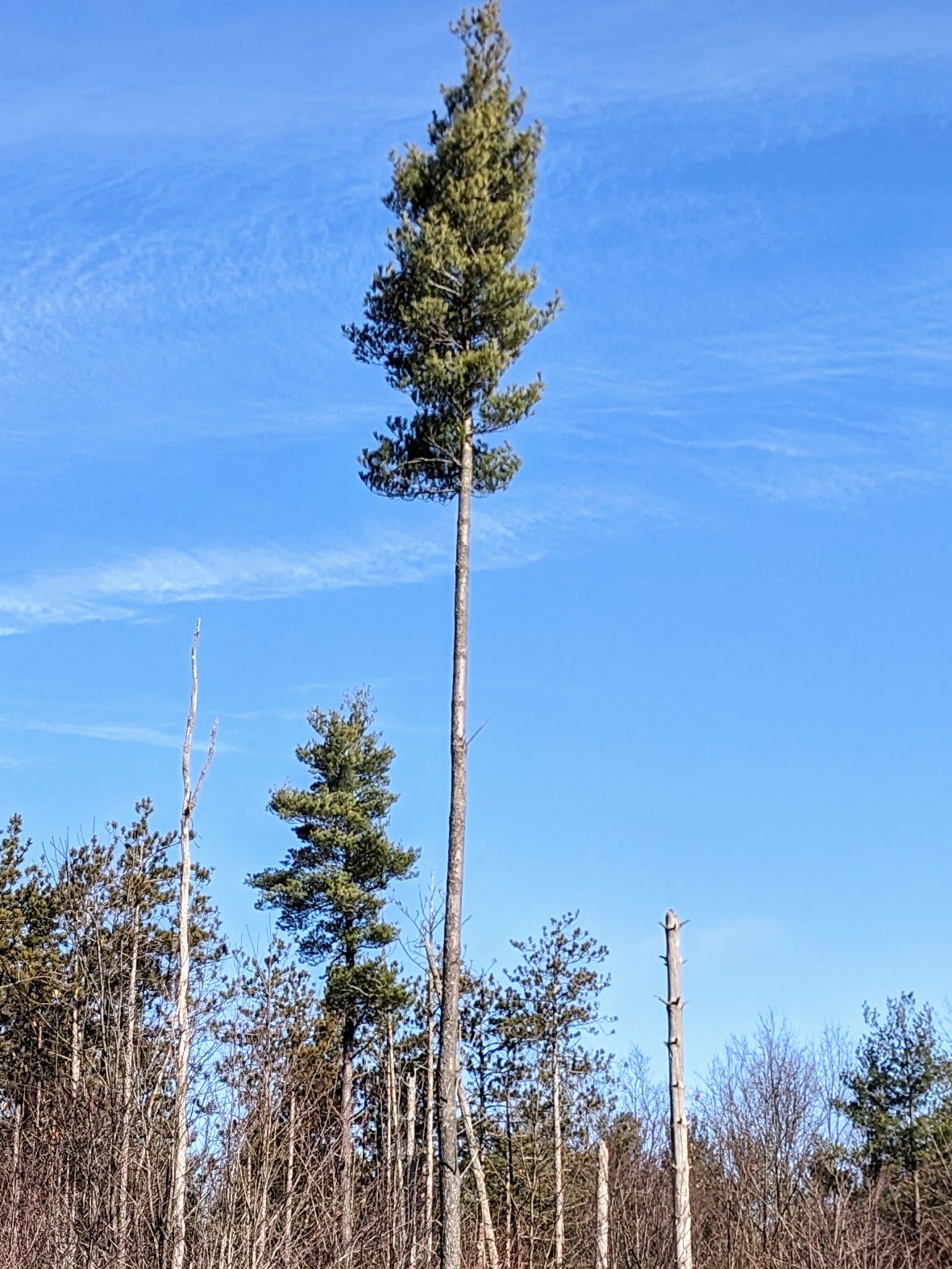My husband and I saw this tree (see image) when we were on a local walk in a wooded area. We were wondering why it would be so tall with all its branches on the upper portion and nothing on the lower part of the trunk. He is convinced that it was pruned this way by a person, whereas I think this is naturally occurring (maybe it grows tall like this to get the light, only this hypothesis doesn't make sense for this particular tree because there are no other trees nearby to compete for light). We have a bet going, please help us settle it!
-
1pine trees do naturally lose their lower branches over time. I had trees like that on my property and I know nobody pruned them to be that way,– Kate GregoryCommented Dec 27, 2023 at 20:47
-
5Are you sure that the tree grew like this and not in a closely planted forrest? My first impression was of a forrest after felling most of the trees or after a storm got through.– Willeke ♦Commented Dec 28, 2023 at 6:56
-
1Yes, it's possible it grew in closer proximity to other trees. There are woods very nearby (you can see other trees in the original photo). We looked for stumps or other evidence of trees that used to be next to this tree and did see a few dead tree pieces on the ground.– julia_smCommented Dec 28, 2023 at 14:20
-
+1 for the interesting picture but still: wounds from shed branches should be visible in the bark. Some climbing could help with that.– VoracCommented Jul 11 at 17:42
3 Answers
Its not the just the pine trees that lose (or shed) the lower branches, its a well-known phenomenon of most tress that exhibit the vertical growth beyond a certain height. Its just that, it is more noticeable in Pine trees and to an extent in case of Eucalyptus trees as well.
The most fundamental reason for shedding seems to be the case that those lower branches become redundant as they are over-shadowed by the upper branches. It is kind of natural self-pruning mechanism that allows such trees to sustain overall growth.
-
1+1 True, I see similar, although not nearly as extreme, "self pruning" in many of my trees that are in my small woods. Often, when the lower branches become scraggly and unsightly, I will prune them myself. And, HI, glad to see you again!– ab2Commented Jan 2 at 15:18
When trees grow close together, as was likely the case for the tree in your picture, there will not be much light reaching the lower branches. Those lower branches will die back.
Usually those trees stay close together till they are all felled. This kind of having trees growing close together, all of the same kind of tree, is mostly done for timber but in the past there were lots planted for masts for sailing ships.
In some climates trees grow this close together naturally, tropical rain forest might well be the best known one, or maybe in much of the world this kind of natural forests have been cut down as it provided timber for the taking.
Trees that grow in an open space will usually spread their branches wider and while the bottom ones will drop off when the higher ones overshadow them, these trees will never grow into a narrow plume above a naked trunk, as the tree in your photo.
I have seen people cut off the lower branches of city trees but those will rarely been pruned to this extend.
As felling is mostly done very efficient, I guess this is the result of a storm, which uprooted many of the trees leaving this one behind by accident.
This tree would not grow this way in isolation.
From the image it seems quite probable to me that this was at some point a re-forested pine or spruce tree plantation. These are industrially managed tree plantations optimised for wood production per area. Saplings which are pre-grown in other locations are planted extremely close together and will shoot up close to each other, competing for light and leading to a very dense and dark forest. This is bad from an ecological standpoint (little diversity, little variance in ecosystems for various species), but gut for business... lots of wood to sell.
The lower branches in such growths will inevitably die off since they aren't worth the effort anymore for the tree as there is hardly any light reaching them. You'll end up with many high trunks and a very dense canopy far up in the treetops.
In the picture shown I'm guessing that the rest of the plantation trees were felled and for some reason this one tree was left standing. Or there was a storm who flattened an area of plantation forest and this tree was a lucky survivor (I have seen many such examples before).
